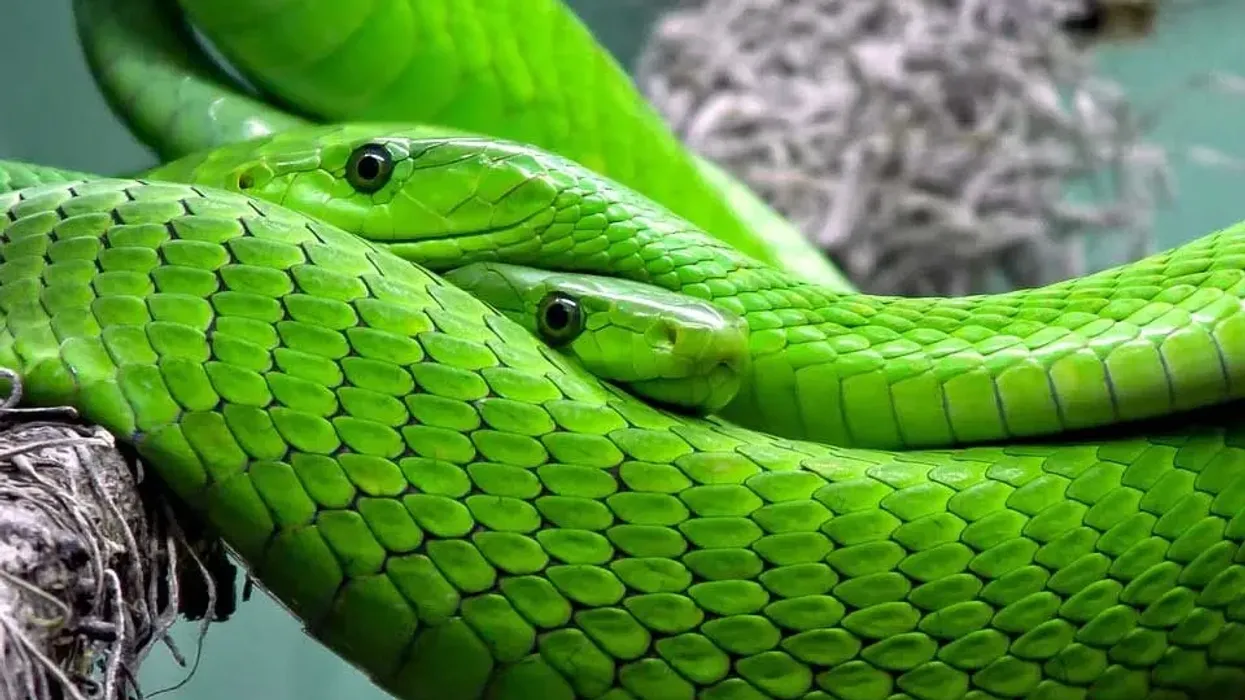The Green Man is depicted as a head formed of leaves in numerous cultures worldwide.
A legendary and influential being, Green Man, is also called or is related to as 'man in the tree,' 'Viridios,' 'Derg Corra,' and 'Jack O' The Green.' He is associated with Celtic culture and may be seen in religious structures in Ireland and the United Kingdom today.
The Green Man symbolizes rebirth and possible co-dependence between nature and man. It represents the lushness of growing vegetation and the arrival of spring and summer. In many myths, he appears as a variety of figures. Plants and flowers are so important to life on Earth that practically every civilization has a god dedicated to them.
Celtic mythology may be linked to Cernunnos, the horned deity, and Vedirio, the masculine god of vegetation. According to certain historians, the human disgorging head was especially important to the Celts because it served as a receptacle for the soul. In reality, the Celts were infamous for using heads as combat trophies, and heads frequently feature in Celtic art.
The Green Man is often used to represent ecological awareness or seasonal renewal: growth. He has been associated with everything from the Greek god Pan, to the Celtic Cernunnos, to vegetative deities like Dionysus or the Welsh Blodeuwedd, to the medieval woodwose or 'wildman of the wood.'
Mysteries Behind The Green Man
The Green Man is one of the world's most enigmatic and divisive legendary creatures. We say the world since this figure isn't tied to single mythology.
The Green Man may be found in hundreds of different civilizations and faiths worldwide.
The earliest known instances of Green Man sculptures date back to at least the second century, as cataloged by British singer or songwriter Mike Harding in his book 'A Little Book Of The Green Man.' Harding notes examples of the figure from Lebanon and Iraq, while other anthropologists have pointed out similar figures from ancient India, Nepal, and Borneo.
The Green Man is a profound archetypal symbol and a historical concept that embodies nature's ever-renewing vitality and wisdom. While the Green Man represents all of nature's vitality, it is especially symbolic of the masculine linked to the natural world, which the modern world has overlooked for far too long.
The Green Man fact form is frequently shown as a face composed entirely of or covered with green leaves.
Green Men are everywhere, or so it would seem. But for such a ubiquitous figure, the Green Man of folklore remains surprisingly mysterious.
The Green Man's mouth and nose may sprout vines and other plants, and in certain instances, his entire body joins his head.
While the Green Man has appeared in many forms in the east and the west, his most well-known modern appearance is based in the hundreds. If not thousands of stained glass foliate or leaf heads mysteriously carved into Europe's ornate medieval 'gothic' churches.
Perhaps the most common, and the one most often associated with the figure of the Green Man in modern culture, is what is known as the Foliate Head: a humanoid face wholly covered in or formed from green leaves.
Description In Mythology
Green Man is also a combined picture of man and plant, a union of humanity and the vegetative world, and he knows and reveals province hall nature's secrets. Strongly connected to the May King and John Barleycorn during the fall harvest, the Green Man was referred to as a god of vegetation and plant life.
He symbolizes what is found in the natural plant world and the Earth itself via the existence of pagan symbols.
Yet the true origins and nature of the Green Man are unknown.
However, some believe that the figure's idea evolved independently in countless folkloric traditions, explaining its widespread appearance. Others have suggested that the ubiquity of the Green Man figure was exported around the globe along with colonialism.
He is most commonly found in medieval Christian churches, but he dates to pagan times. He is a symbol of a horned god who was eventually integrated into Christian art by Catholic pleasants who kept the Green Man's spirit alive.
In reality, the spirit of the Green Man is still honored via rituals and celebrations today.
One of them takes place at Hastings, on the English Channel. The mythology of Green Man is said to have developed entirely independent of the traditions and cultures of different ancient cultures and then evolved into the variety of examples found throughout history.
Other names for the Green Man have been proposed. He is known as 'Jack O' The Green,' linked to Robin Hood and many facets of God.
Wild men Cernunnos, Herne the Hunter, Osiris, Khidir, Adonis, and Dionysos are just a few of the Gods he appears in. All of these historical Gods are associated with death and rebirth somehow. In a never-ending cycle, the Green Man constantly delivers birth from death.
He is related to the Ouroboros as a result of this. This symbol depicts a snake biting its tail in an endless circle.
Symbolism Of The Green Man
The Green Man pagan symbol and possible co-dependence between nature and man represent the lushness of growing vegetation and spring and summer's arrival. In many myths, he appears as a variety of figures. Plants and flora are so important to life on Earth that practically every civilization has a god dedicated to them.
In Celtic mythology, he may be linked to Cernunnos, the horned deity, and Viridios, the masculine god of vegetation. According to certain historians, the human head was especially important to the cross vault Celts because it served as a receptacle for the soul.
In reality, the Celts were infamous for using heads as combat trophies in stone carving, and the head was frequently featured in Celtic art.
The Green Man is said to represent the cycle of growth every spring and directly relates to the symbol of rebirth. Many consider him the ancient guardian of the forest.
However, the exact origins and nature of the Green mason Man are unknown, and others believe that the figure's concept rose garden independently in several folklore traditions, explaining its broad occurrence.
Others have stated that colonialism and the popularity of the Green Man motif were both transmitted over the world. One of the reasons the Catholic church at the time didn't mind this particular Celtic symbol becoming rampant was because their ideology could be used for their means too.
As the symbol showed death and resurrection, the church then saw it as a way to spread the word of Christianity through symbology.
FAQs
Where did the Green Man come from?
The bar name 'The Green Man' appears to have arisen in the 17th century and is related to the leaf-covered Green Man used in a 16th-century display in its earliest mentions. Lady Raglan drew on this pagan belief long tradition when she called the foliate head 'Green Man' as we have seen.
Where is the Green Man found?
According to legends, it is probably to be expected that the Green Man appears most frequently in locations that have expanses of old forest woodlands, such as Somerset and Devon, the Yorkshire outskirts, and the Midlands' forest districts.
Where did the Green Man originate from?
The name 'The Green Man' appears to have arisen in the 17th century and is related to the leaf-covered Green Man legend used in 16th-century celebrations in its earliest versions. Lady Raglan drew on this tradition when she titled the then foliate head as 'Green Man.'
What is the story of the Green Man?
The Green Man is a mythological entity that is most often understood as a symbol of rebirth, reflecting the annual cycle of new growth. The most typical portrayal of the Green Man is a sculpture or other representation of a face formed of or entirely surrounded by leaves.
Who made the Green Man?
The Green Man is known as a legendary figure from folklore. There have been claims by numerous historians who staunchly believe that an amateur folklore scholar called Lady Raglan created the term 'Green Man' in the '30s.
Who is the Green Man in real life?
Although the Green Man is a legend that many believe, in real life, there was indeed an American man named Raymond Theodore Robinson, whose face was disfigured. His nightly walks became famous, and Raymond Robinson became a figure of urban folklore in western Pennsylvania for years.
Has somebody ever seen the Green Man?
The Green Man represents the life, death, and rebirth cycle. He is a pagan emblem for the regeneration of luxuriant greenery and the arrival of spring after a long winter. It is unknown whether any visual sightings have been confirmed yet.
How did the Green Man become popular?
Pagan beliefs in ancient times were deeply grounded in nature, and this pagan god of nature was claimed to have lived not only among Celtic forest tribes located north of Europe but also among famed empires such as Rome, Greece, and Egypt.








